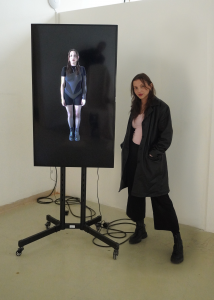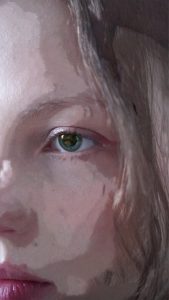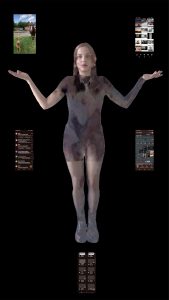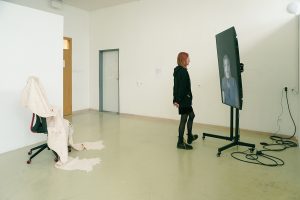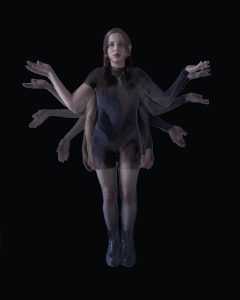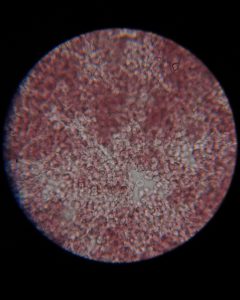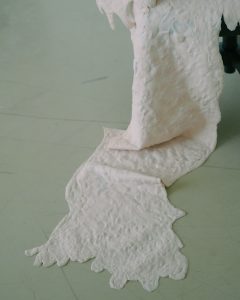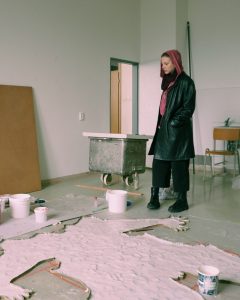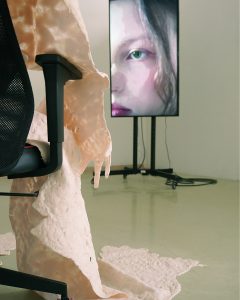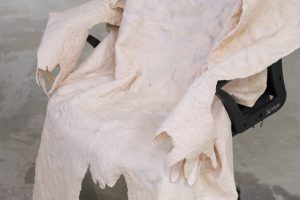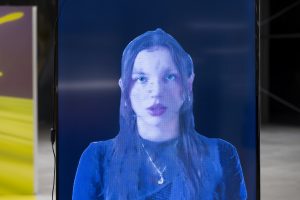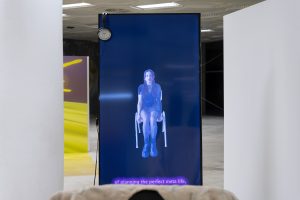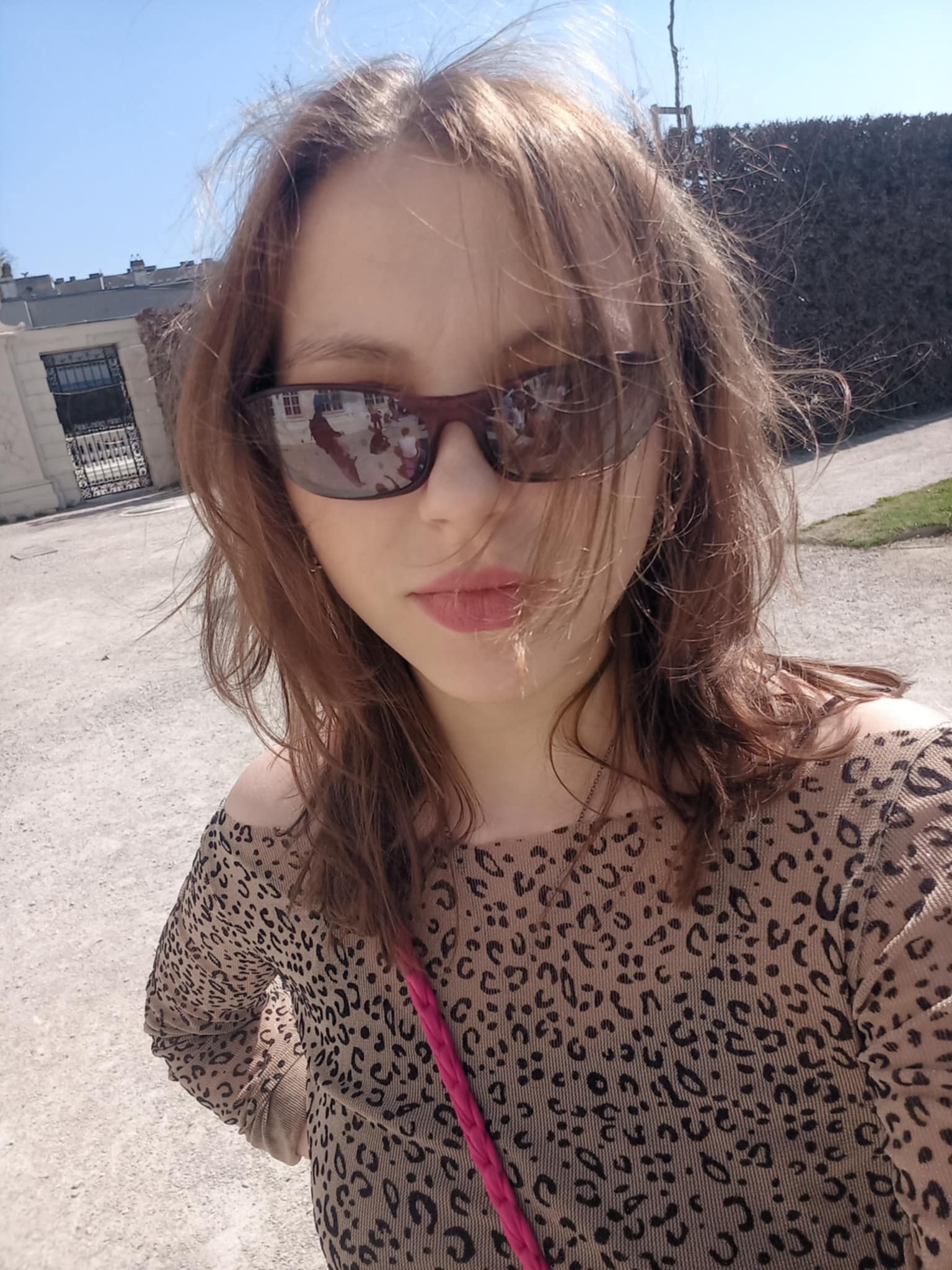Ja je niekto iný / I is Another
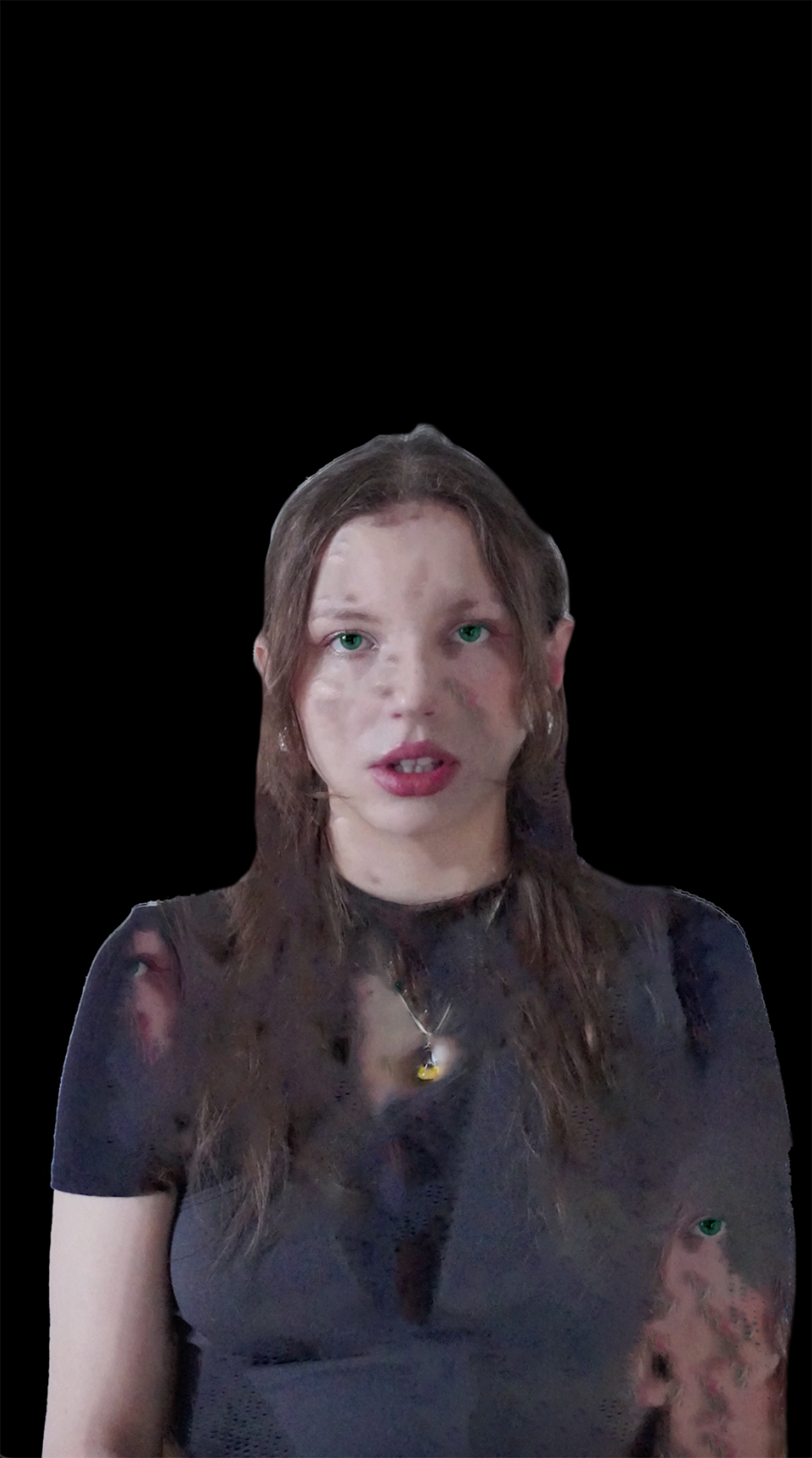
SK:
„Ja je niekto iný” je citácia francúzskeho poeta Arthura Rimbauda, ktorá sa často interpretuje ako výpoveď o plynulosti, mnohosti či fluidity identity.
Rozmýšľam nad životom po živote – nad našou virtuálnou stopou, digitálnou fosíliou, ktorá tu zostáva aj po expirácii fyzického tela. Avatar, ktorý sa stáva prostriedkom existencionalistickej reflexie, rozpráva v svojom monológu, to čo by chcel docieliť – využiť dáta svojho „hostiteľa”, s pomocou ktorých by vytvoril novú verziu seba, novú identitu.
Vždy existovalo náboženské pnutie s cieľom opustiť vlastné telo. Termín „avatar” pôvodne pochádza z hinduistickej filozofie, kde označuje inkarnáciu božstva do fyzickej podoby na zemi.
Koža je v tomto prípade hranicou, ktorá drží všetky procesy vnútri tela. Uzatvára do seba tajomné biologické procesy – voľnému oku neprístupné, tak ako aj autenticky tvorené spomienky, mentálne stavy a spirituálne tendencie.
„Ja” je vo vzťahu k virtuálnemu vteleniu neukončených procesov, umožňujúcim nám nahliadnuť na limity vlastného života. Je ešte vôbec dôležité kde je v interakcii s avatarom naše „ja”, keď fyzické telo už nejestvuje a on sa stáva niekým iným?
ENG:
“I is another” is a quote by the French poet Arthur Rimbaud that is often interpreted as a statement about the multiplicity or fluidity of identity.
I think about life after life – our virtual footprint, the digital fossil that remains there even after the physical body has expired. The avatar, which becomes a vehicle for existentialist reflection, narrates in its monologue what it would like to achieve – to use the data of its “host” with which to create a new version of itself, a new identity.
There has always been a religious impulse to leave one’s own body. The term “avatar” originally comes from Hindu philosophy, where it denotes the incarnation of a deity into a physical form on earth.
The skin in this case is the boundary that holds all processes inside the body. It encloses within itself mysterious biological processes – inaccessible to the naked eye, as well as authentically formed memories, mental states and spiritual tendencies.
The “I” is in relation to the virtual embodiment of unfinished processes, allowing us to glimpse the limits of our own lives. Does it even matter where our “I” is in interaction with the avatar when the physical body no longer exists and “it” becomes someone else?
Link na video / Video link: https://vimeo.com/manage/videos/957083208
